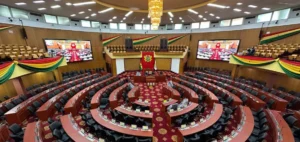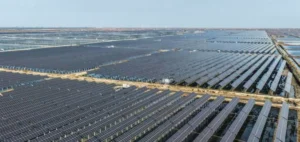The COP27 in Sharm el-Sheikh, Egypt, ended on Sunday with mixed results and reactions have been pouring in to welcome progress in helping poor countries affected by climate change, but also to regret a lack of ambition in reducing emissions.
UN Secretary General Antonio Guterres: “We need to drastically reduce emissions now – and that’s a question that this COP has not answered”.
“This COP has taken an important step towards justice. I welcome the decision to establish a loss and damage fund and to make it operational in the near future. This will clearly not be enough but it is a much needed political signal to rebuild broken trust.
Frans Timmermans, Vice President of the European Commission: “The world will not thank us when it hears only an apology tomorrow”.
“What we have here is a step forward that is too short for the people of the world. It doesn’t provide enough additional effort from major emitters to increase and accelerate their emissions reductions.”
Annalena Baerbock, German Green Foreign Minister: “Hope and frustration” are mixed.
“We have made a breakthrough on climate justice – with a broad coalition of states after years of stagnation,” but “the world is losing precious time on the 1.5 degree trajectory.”
Agnès Pannier-Runacher, French Minister for Energy Transition: “No progress was made on the need to make additional efforts to reduce greenhouse gases and to move away from fossil fuels. This is a real disappointment”, but this summit “responds to the expectations of the most vulnerable countries with a strong advance: the creation of new financing tools for loss and damage related to climate disasters”.
Shehbaz Sharif, Prime Minister of Pakistan hit by catastrophic floods this summer (more than 1,700 deaths): The adoption of a dedicated fund to finance climate damage is “a decisive first step towards the goal of climate justice”.
“It is up to the transition committee to build on this historic development.
Pakistan’s Climate Change Minister Sherry Rehman, current chair of the powerful G77+China negotiating group, had earlier called the fund “not a matter of charity” but “a down payment on the longer-term investment in our common future and an investment in climate justice.
Antigua and Barbuda’s Minister of the Environment, Molwyn Joseph, on behalf of the Alliance of Small Island States (Aosis): “Aosis promised the world that it would not leave Sharm el-Sheikh without succeeding
to establish a loss and damage response fund. This 30-year mission is now complete.
Laurence Tubiana, architect of the 2015 Paris Agreement: “This COP has caused deep frustrations but it was not in vain. It has provided a significant breakthrough for the most vulnerable countries. The loss and damage fund, which was only a dream at COP26 last year, is on track to start operating in 2023″.
“The influence of the fossil fuel sector was pervasive. This COP weakened the obligations for countries to present new and more ambitious commitments.
Vanessa Nakate, youth activist from Uganda: “COP27 was supposed to be the ‘African COP’ but the needs of Africans have been obstructed all along. Losses and damages in vulnerable countries can no longer be ignored but some countries here in Egypt had decided to ignore our suffering. The youth have not been able to make their voices heard because of restrictions on demonstrations but our movement is growing.
The NGO Christian Aid: “It has been a long struggle for developed countries to get this fund, the devil will be in the details and money still needs to be put into it. But this is a positive step forward towards climate justice.
“It is disappointing that despite all the rhetoric from leaders at the beginning of this summit about the seriousness of the climate emergency, countries have not even agreed on a phase-out of all fossil fuels.”






















